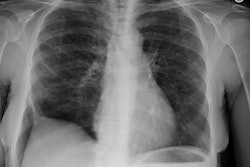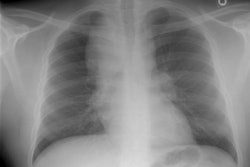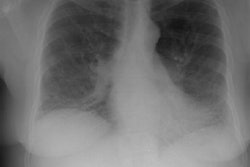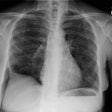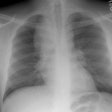Medicine (Baltimore) 1988 May;67(3):154-162
Chronic eosinophilic pneumonia. A report of 19 cases and a review of the literature.
Jederlinic PJ, Sicilian L, Gaensler EA
Pulmonary and Critical Care Medicine Division, University of Massachusetts Medical Center, Worcester 01655.
Clinical, roentgenographic and pathologic findings in patients with chronic eosinophilic pneumonia, including 19 additional cases, have been reviewed and summarized. Most patients present with subacute respiratory and constitutional symptoms and have failed to respond to therapy for presumptive pneumonia. A previous history of atopy, most often asthma, will be obtained in one-half. Eosinophilia occurs in most cases and its absence may be the major indication for lung biopsy. Although pulmonary infiltrates are more often peripheral than not, the classic "photographic negative of pulmonary edema" is seen in less than one-third of cases. Pathologic findings include an intra-alveolar and interstitial infiltrate which comprises eosinophils, histiocytes, and exudate. Bronchiolitis obliterans and eosinophilic microabscesses occur less frequently. Open-lung biopsy is preferable when atypical features prevent a confident clinical diagnosis. The exquisite responsiveness of CEP to corticosteroids should encourage use of a therapeutic trial when there is a strong clinical suspicion of the disorder. The rapid clinical response should not deter the clinician from giving a prolonged course of treatment. The differential diagnosis includes other diseases characterized by PIE and the more recently recognized bronchiolitis obliterans and organizing pneumonia, a disorder which is also marked by peripheral pulmonary infiltrates.
PMID: 3285120, MUID: 88216097
